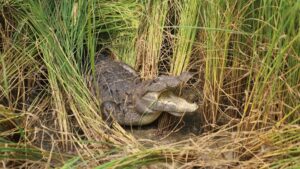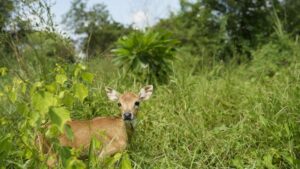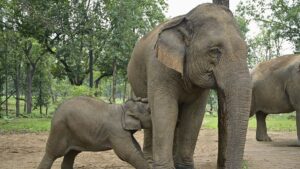Yellow-throated Bulbul: The Lost Songbird Returns To Ramdurga Valley
The rocky hills of southern India hold many secrets, and among their most enchanting ones is a little bird with a golden throat and a bubbly call. The yellow-throated bulbul (Pycnonotus xantholaemus) is one of India’s true natural treasures. Found nowhere else in the world, it is a rare endemic species whose very existence is tied to the rugged, scrubby landscapes of the Deccan Plateau and the Eastern and Western Ghats.
Unlike its cousins, the red-vented bulbul and white-browed bulbul, which are seen in forests, gardens, and city parks, the yellow-throated bulbul chose a very different path. Over thousands of years, it adapted to a life among rocky outcrops dotted with thorny shrubs and seasonal fruiting trees. Scientists believe that as India’s climate shifted over millennia and forests gave way to drier scrublands, some bulbul populations became isolated. Trapped in these unique habitats, they gradually evolved into specialists, thriving only where the rocks, figs, and streams offered them food and shelter. This is why today, the yellow-throated bulbul exists only in southern India.
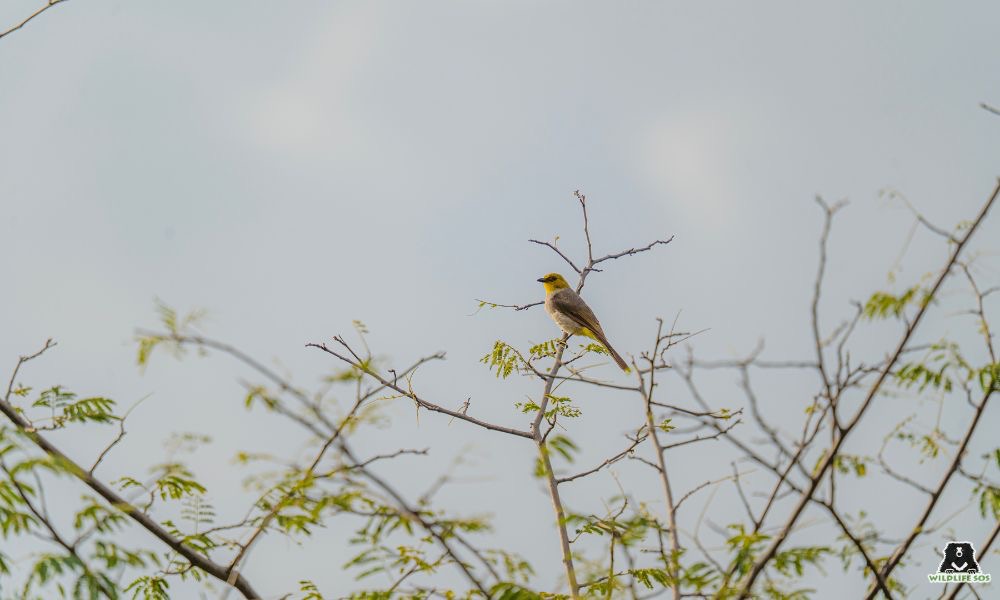
One place where these birds were once commonly seen was Ramdurga in Karnataka. The hills of Ramdurga, with their granite boulders and wild fig trees, perfectly suited them. But this landscape had begun to change. Expanding mining activities scarred the rocky hills, and deforestation cleared away the native trees that provided food and shelter. Agriculture ate into the scrubs, urbanisation crept closer, and heavy grazing stripped the hillsides bare. Invasive plants spread in the absence of native vegetation, further degrading the habitat. Gradually, the bird that had once been a familiar sight in Ramdurga disappeared. Local people would recall the gentle whistles of the bulbul echoing across the slopes. For years, its song was lost, and many feared that the bird had gone extinct from the region.
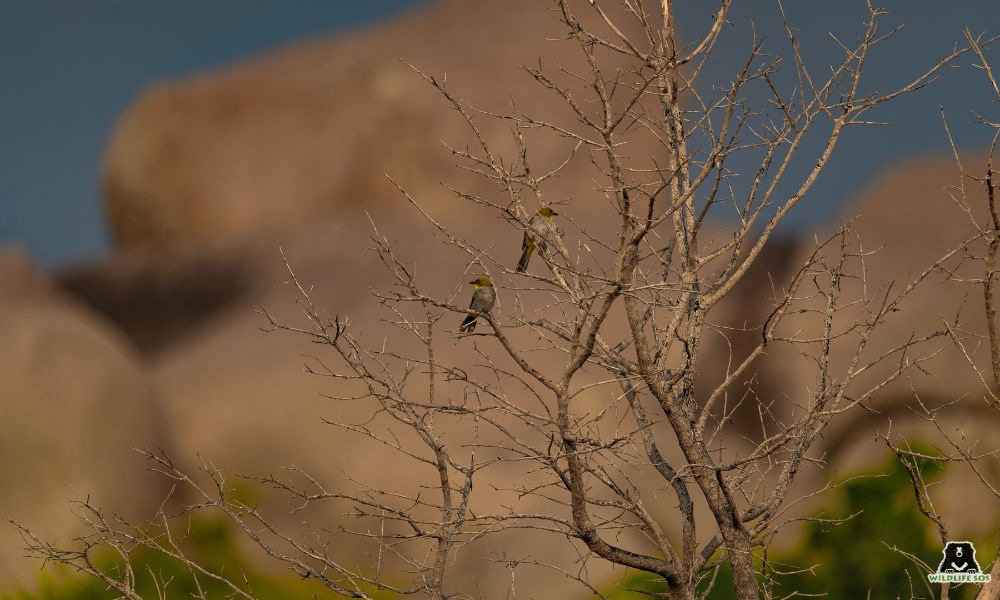
In 2017, Wildlife SOS began working in Ramdurga with the aim of restoring degraded habitats. The vision was to bring back the wildness of the hills, creating conditions where native species could thrive again. A key part of this mission was large-scale tree plantation. But instead of planting fast-growing non-native trees, the team carefully chose species that were historically part of the ecosystem. Fig trees, for instance, were selected because they fruit multiple times a year and provide a vital food source for birds, bats, and other wildlife. Alongside these, other native shrubs and trees were planted to provide shelter and nesting spaces.

The work did not stop at planting. Efforts were made to reduce grazing pressures, manage invasive plants, and involve the local community in protecting the land. Slowly, the changes became visible. The barren slopes began to turn green, with scrubs taking over again. Seasonal streams revived during the rains. Fig trees bore fruit, and the hills started to hum with the activity of insects, small mammals, and returning birds.
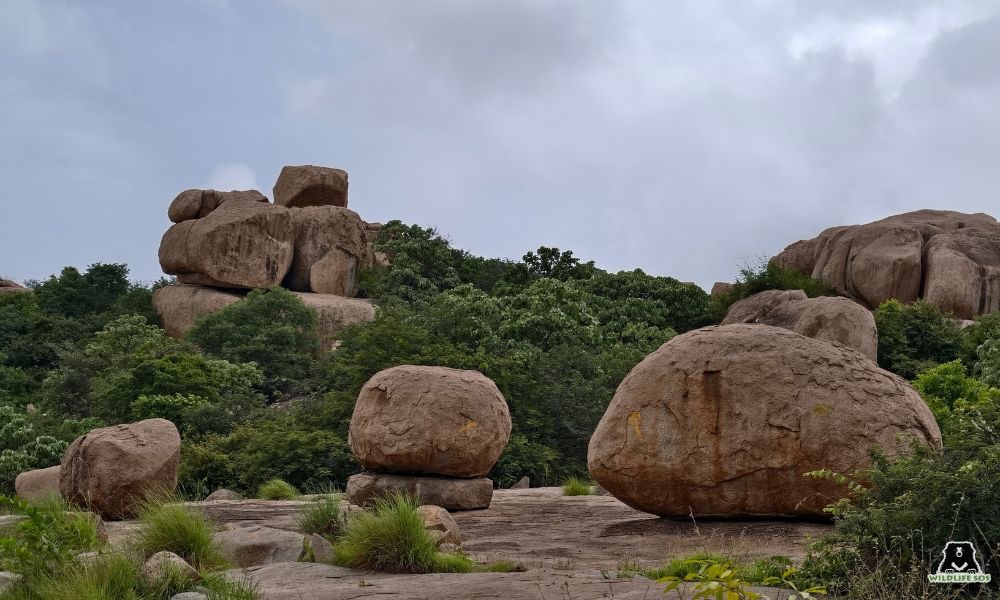
Then came the moment that made all the effort worthwhile. After years of silence, the yellow-throated bulbul was sighted again in Ramdurga. For conservationists and locals alike, it was a moment of immense joy. The return of this species was more than just a symbol of hope — it was living proof that restoring habitats can restore the species that once inhabited it. The bird had not vanished completely; one can say that it had simply been waiting for the right conditions to make a comeback.
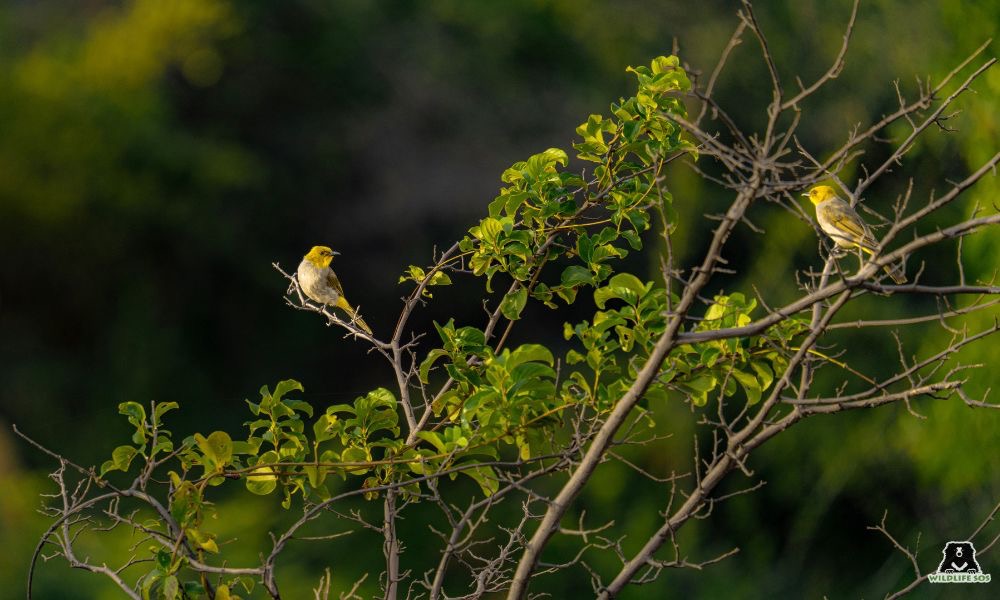
The yellow-throated bulbul is classified as Vulnerable on the IUCN Red List, with fewer than 15,000 mature individuals left in the wild. Its fragmented populations face ongoing threats from quarrying, tourism, and habitat loss. Protecting this bird means protecting its entire ecosystem, which also shelters sloth bears, pangolins, leopards, and countless creatures that depend on rocky scrub habitats. The survival of the bulbul is tied to the survival of the wild hills themselves.
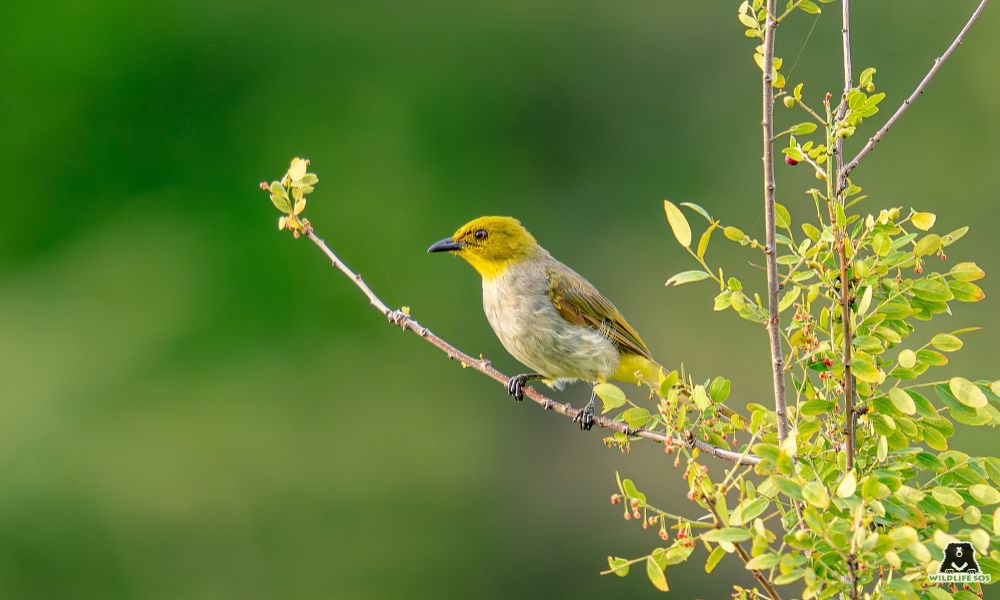
The story of the bulbul in Ramdurga Valley shows us that conservation is not only possible, but it works when done thoughtfully. Planting the right trees, giving the land time to revive, and working hand in hand with communities residing close to the area can thwart the many threats like poaching and deforestation that species are facing today. Empowering communities with knowledge and making them key stakeholders of conservation involves patience, persistence, and a shared respect for nature.
Today, the yellow-throated bulbul’s song has returned to Ramdurga Valley. It echoes among the granite boulders and fig trees once again. Its journey from silence to revival is a reminder that nature and its residents are resilient, and when given a fair chance, they can resurrect. At Wildlife SOS, we believe every life matters, no matter how small. The return of the yellow-throated bulbul is not just a conservation success, it is a promise of hope, showing us that with care and commitment, we can bring back what was once thought as gone forever.
While the lost species have returned to Ramdurga, the work of restoring this region and planting more native trees to revive other habitats continues — and you can become a part of this initiative by donating towards our conservation projects. Help us plant more trees and sustain the future of these ecosystems!
Feature image : Akash Dolas/ Wildlife SOS


